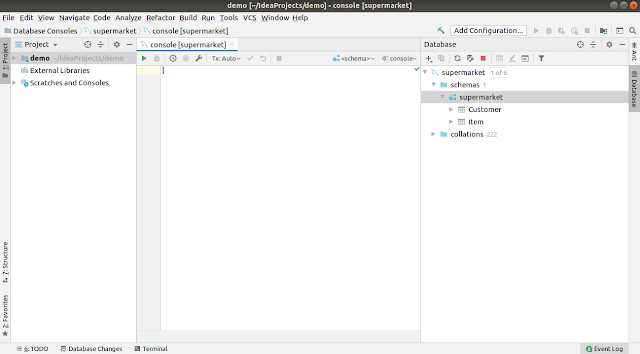Introduction
In today’s software development world, managing databases efficiently is essential. With tools like IntelliJ IDEA Ultimate, you can seamlessly integrate and manage your data sources without relying on external database management software. This guide will show you how to configure a new MySQL database as a data source in IntelliJ IDEA, a process that can also be applied to other database systems such as PostgreSQL or Oracle Database.
Having a built-in data source setup in IntelliJ IDEA not only simplifies development but also saves valuable time during testing and debugging. With features like IntelliJ database plugins and real-time database management tools, developers can focus on coding rather than switching between platforms.
Why Use IntelliJ IDEA for Database Integration?
- Streamlined Development Workflow: Eliminate the need for external tools like phpMyAdmin or MySQL Workbench.
- Comprehensive Support for Multiple Databases: Includes support for MySQL, PostgreSQL, Oracle, MongoDB, and more.
- Advanced Features: Use features like schema navigation, SQL code completion, and real-time query execution to enhance productivity.
- Seamless Integration: Manage your databases directly from the IDE, ensuring faster debugging and testing cycles.
Let’s explore the process of configuring a new data source in IntelliJ IDEA. For this guide, we’ll focus specifically on setting up a data source for MySQL. However, the steps involved are quite similar for other database types, making it easy to adapt this process to suit your needs. By following this example, you’ll gain a clear understanding of the configuration workflow, ensuring a smooth setup for any supported database system.
How to Configure a New Data Source in IntelliJ IDEA
Open IntelliJ IDEA on your PC or laptop. Ensure that you’re using the latest version to access advanced features available in IntelliJ IDEA Ultimate.
2. Access the Database Tab
- Navigate to the Database tab, typically located in the right-hand corner of the IDE.
- If the Database tab isn’t visible, you can enable it by going to View > Tool Windows > Database.
3. Database Verification
- Before configuring, please ensure that the database you want to connect to is already created. For example, let’s assume a database named supermarket.
- You can ensure the database availability by using following SQL commands.
SHOW DATABASES;- Use this
commandto ensure whether the desired database (e.g.,supermarket) exists on the server. - Example Output:
USE supermarket;- Switch to the active database to
supermarket to ensure that you're working within the intended database for queries or operations. - Example Usage:
- Switch to the active database to
SHOW TABLES;- To view and verify the tables within the selected database database and provides an overview of its structure.
- Example Output:
4. Configure/Add a New Data Source
- Click the + icon in the Database tab.
- Select Data Source > MySQL from the dropdown menu.
- Provide the following details:
- Host: Typically
localhostor your database server’s IP address.
- Port: Default MySQL port is
3306.
- Database Name: Enter the name of your database (e.g.,
supermarket).
- User: Your MySQL username (e.g.,
root).
- Password: Your MySQL user password.
- Host: Typically
- Click Test Connection to verify the details. If successful, a green checkmark will appear.
6. Save the Configuration
- Once the connection is verified, click Apply and then OK.
- Your database will now appear in the Database tab.
1 of 6). Hover over this label to reveal a tooltip showing the connection status. If the tooltip displays "0 connections", it means no active connections have been established with the data source yet.8. Select the Schema
- Locate your newly added data source in the Database tab.
- Click on the schema name (e.g.,
supermarket) to view its tables, procedures, and other details.
9. Congratulations! You have successfully completed the configuration. Your data source is now set up and ready to use. Start leveraging IntelliJ IDEA’s powerful features for seamless database integration and enjoy an enhanced coding experience!

Benefits of Using IntelliJ IDEA for Database Management
- Enhanced Productivity: Query and manage data directly within the IDE.
- Integrated Tools: Features like SQL code formatting, syntax validation, and query history improve accuracy and efficiency.
- Cross-Platform Compatibility: Easily switch between different database systems such as MySQL, PostgreSQL, and Microsoft SQL Server.
Conclusion
Configuring a database in IntelliJ IDEA Ultimate is a game-changer for developers looking to optimize their workflow. Whether you’re working with MySQL, PostgreSQL, or any other database, IntelliJ IDEA simplifies the process with intuitive tools and seamless integration.
Take advantage of IntelliJ IDEA’s powerful features to streamline your development process and focus on building robust, scalable applications.













0 Comments